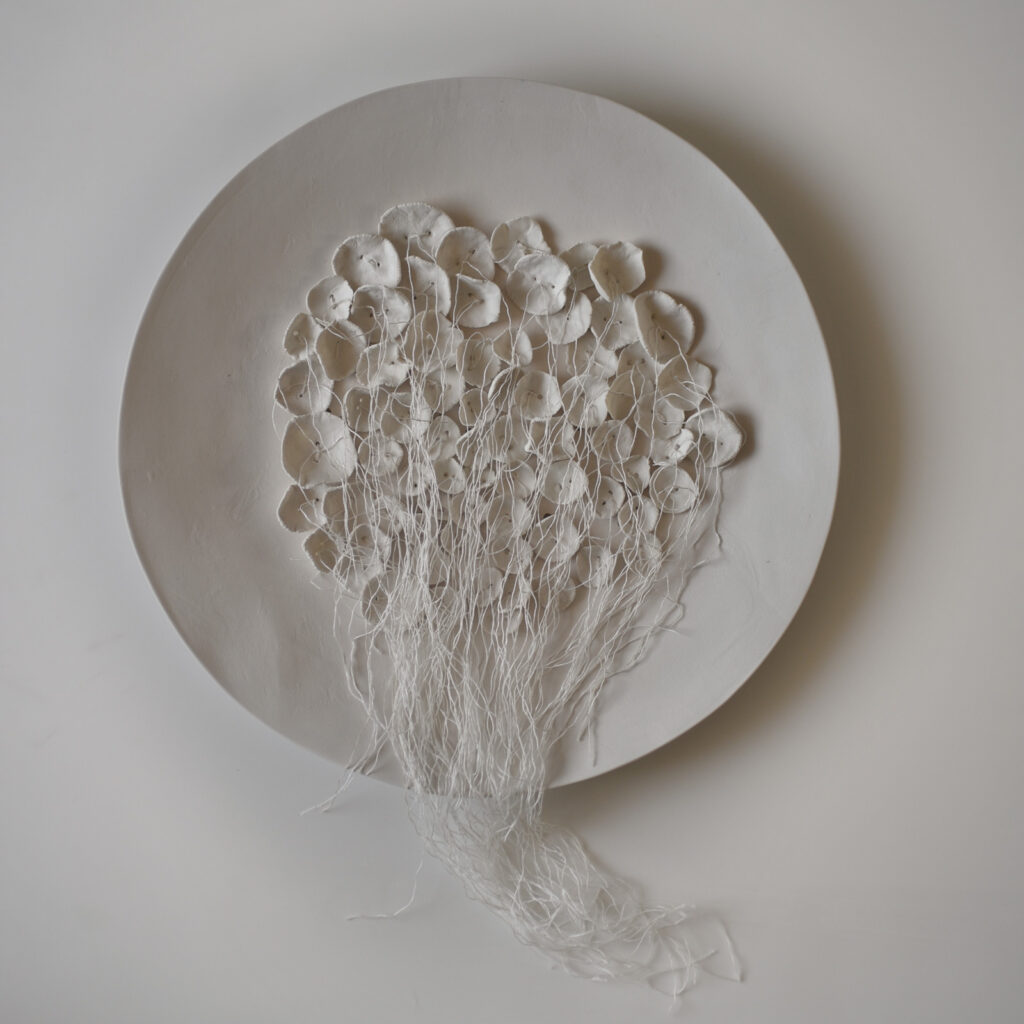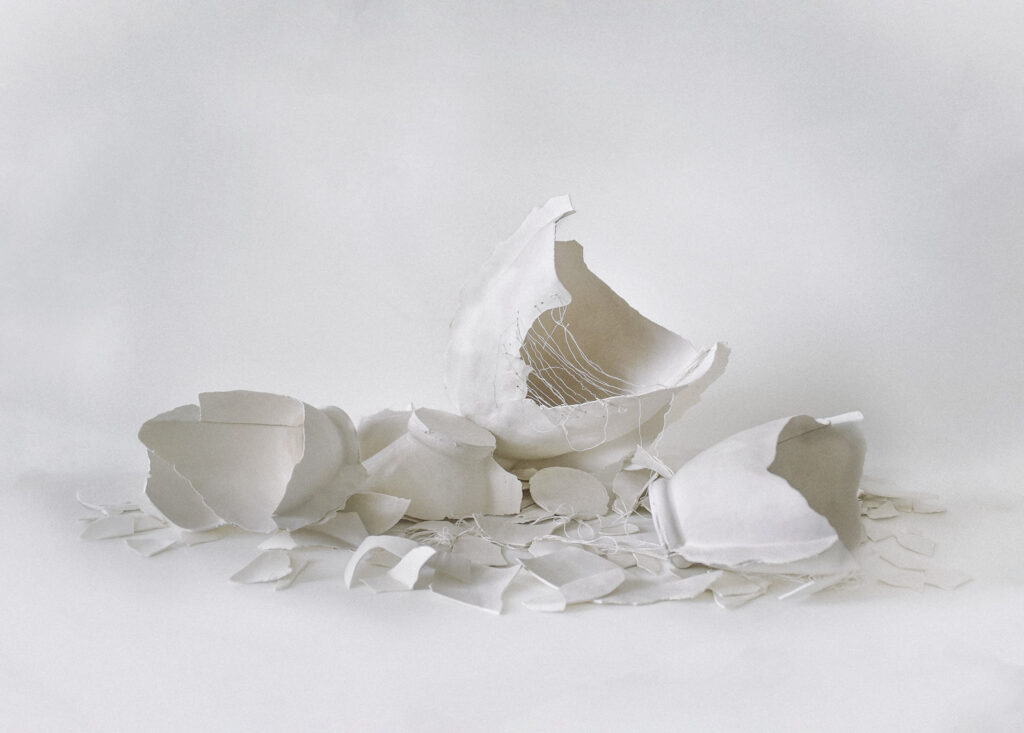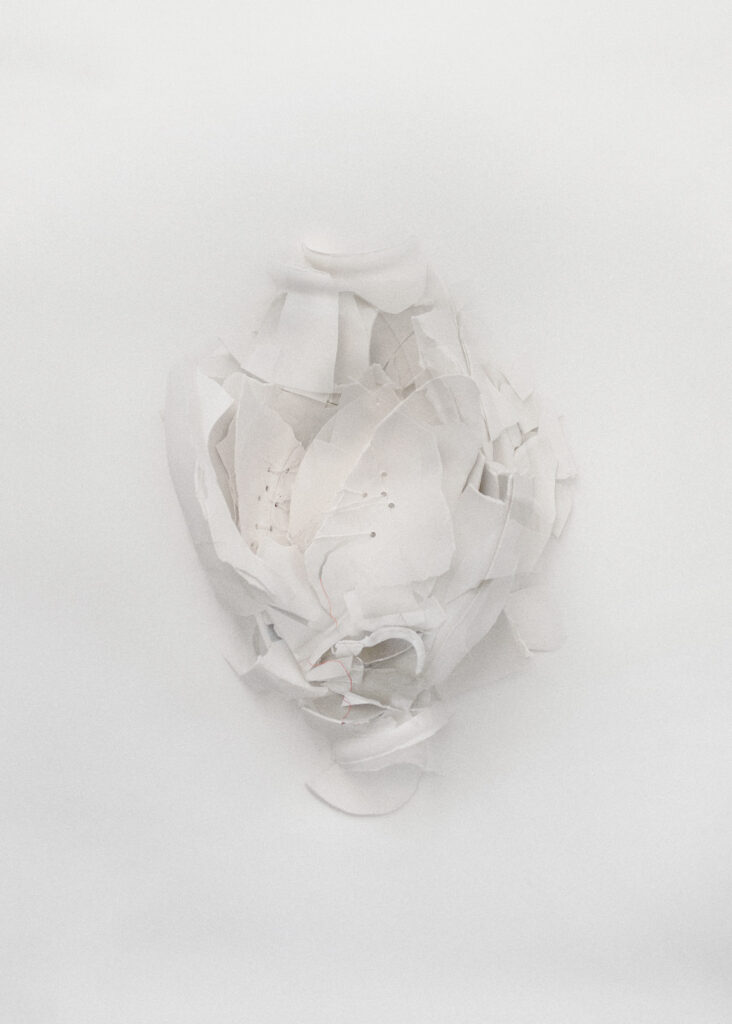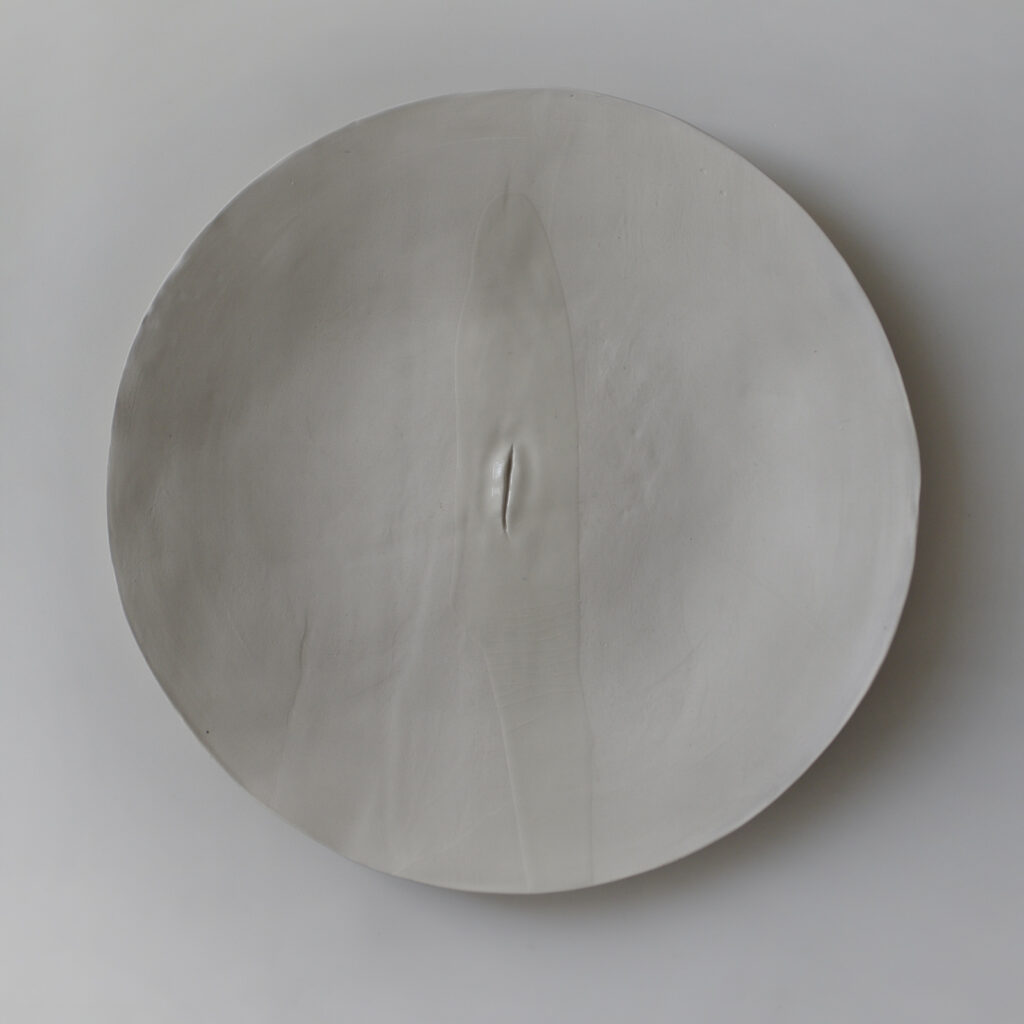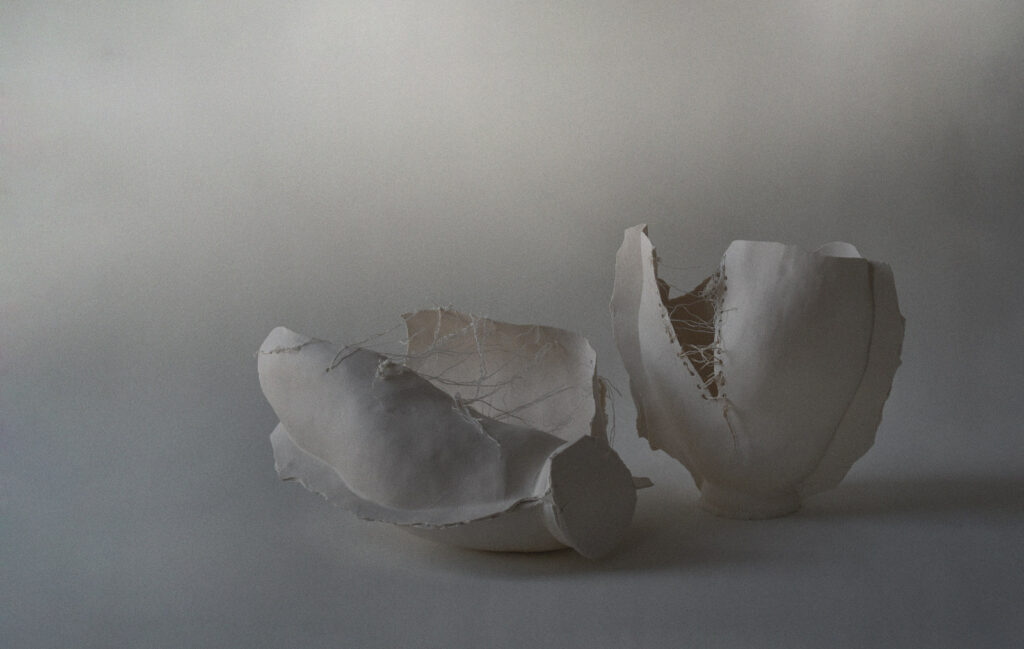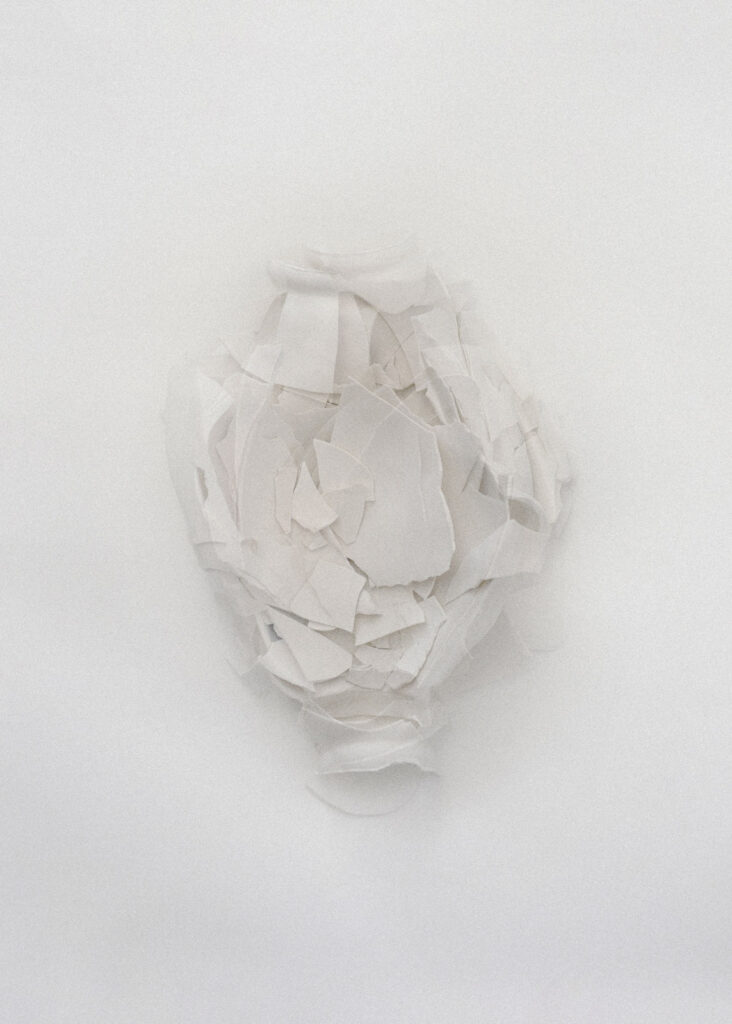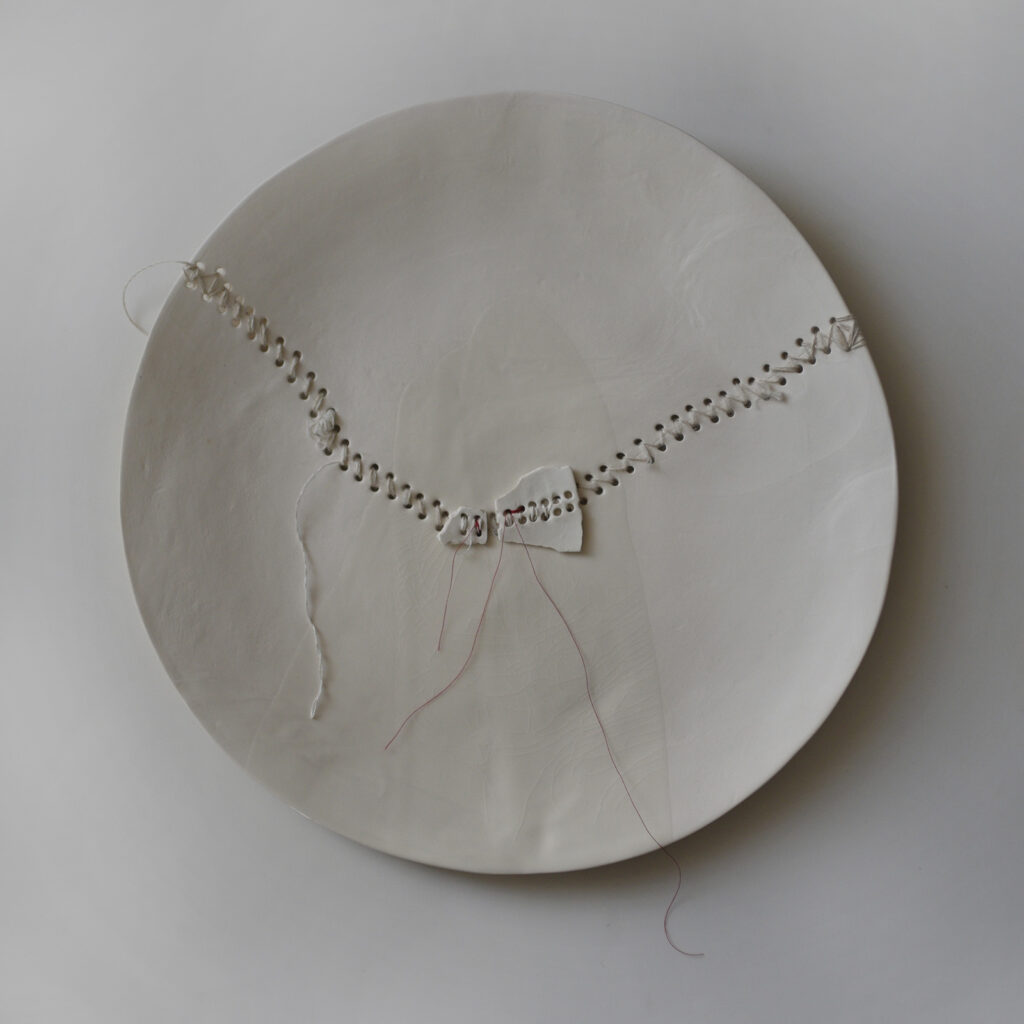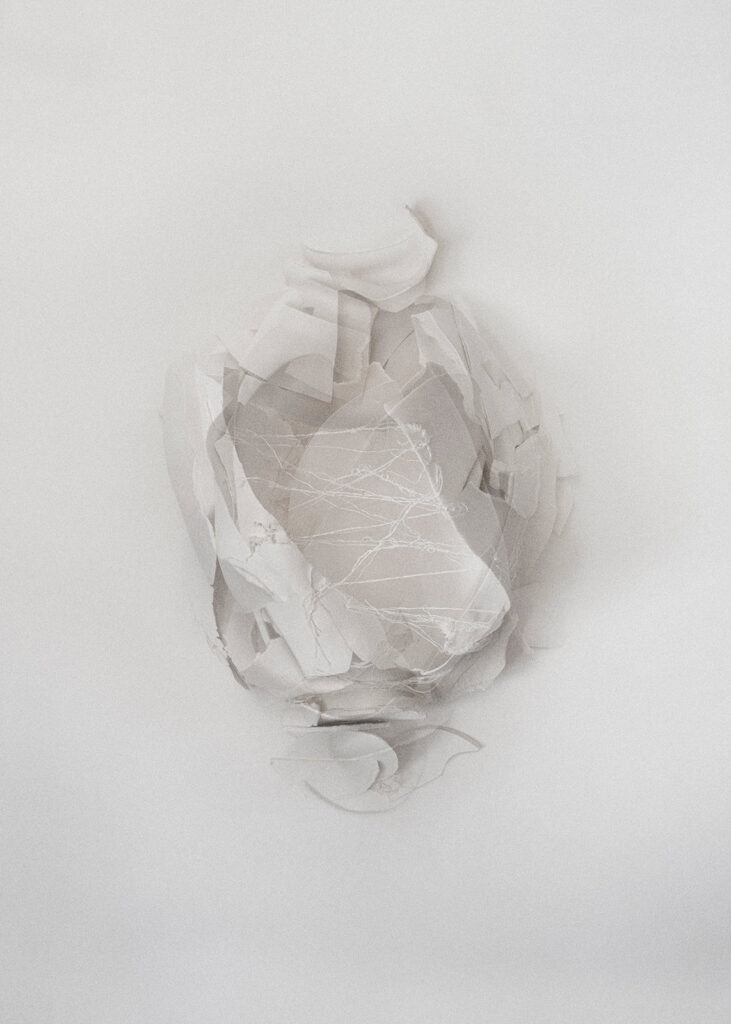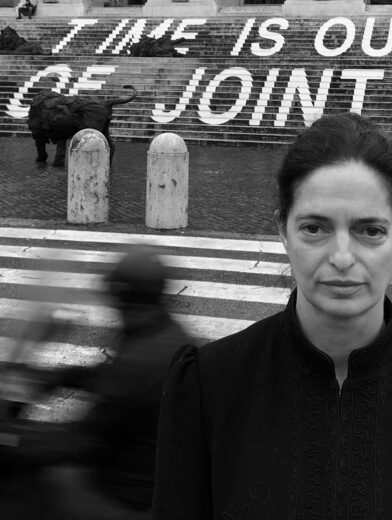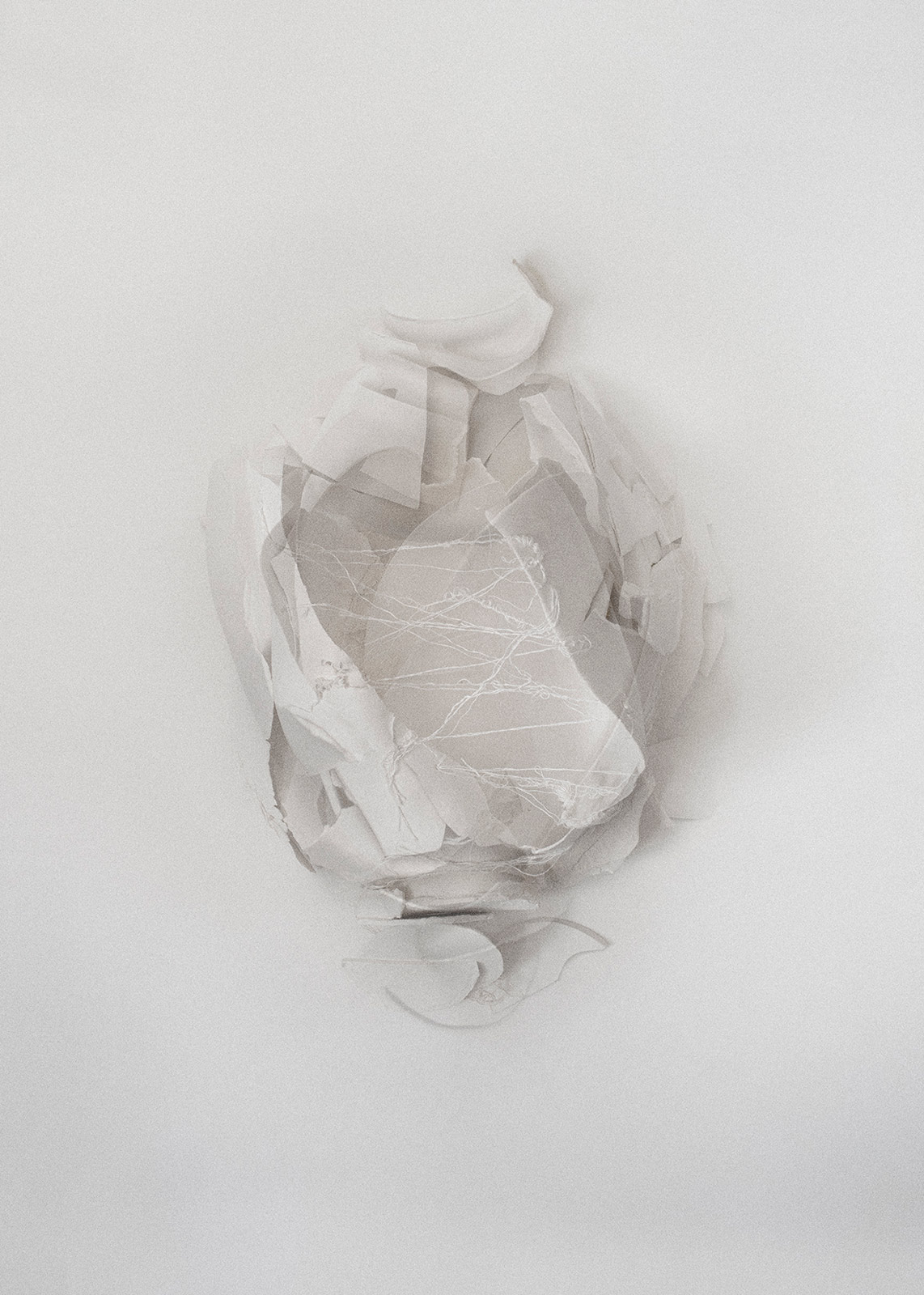
Active on the international scene, Iris Nesher returns to exhibit in Italy following “Materia/Matter” (Nomas Foundation, Rome, 2022) and her participation in a group exhibition at the MAXXI Museum (Rome, 2019).
The exhibition features a selection of monochromatic photographs and Limoges porcelain sculptures, created during 2024, through which the artist offers a powerful and symbolic exploration of fracture and reassembly as metaphors for the human experience, in an era obsessed with perfection.
Within the exhibition, the two different mediums — which reflect and complement each other in this project — create a sort of archaeological landscape of interiority, where Nesher celebrates the beauty of imperfection, opening a space for new meanings.
The fault lines, marking not only the material but also the soul of the objects, are transformed by the artist into precious traces: the porcelain pieces — originally vases and plates — are intentionally shattered and then reassembled using linen thread, which here replaces the gold traditionally used in Japanese kintsugi.
Thread and stitching become a true aesthetic declaration, creating a new visual vocabulary where every junction becomes a moment of beauty and a reflection on the transient nature of existence.
In her photographs, the monochromatic tones — milky whites, soft greys, nuanced chiaroscuros — suspend any spatial and temporal reference, transporting the viewer into a hushed, almost uterine dimension, where fragility is not denied but embraced and celebrated.
Iris Nesher’s work is a visual and material reflection on transformation: from initial wholeness to poetic fragmentation, through the intimate gestures of reassembly that accompany us throughout life. Her works embody this passage, revealing in every crack not only the wound, but also the possibility of a new form — at times a true opportunity, at others a necessity that imposes itself.
“I believe that art, more subtly, traces the fault lines left by these inner fractures — not to close them, but to reveal how they shift and shape our being.” — Iris Nesher
The exhibition is accompanied by a catalogue featuring a critical essay by Manuela De Leonardis.


